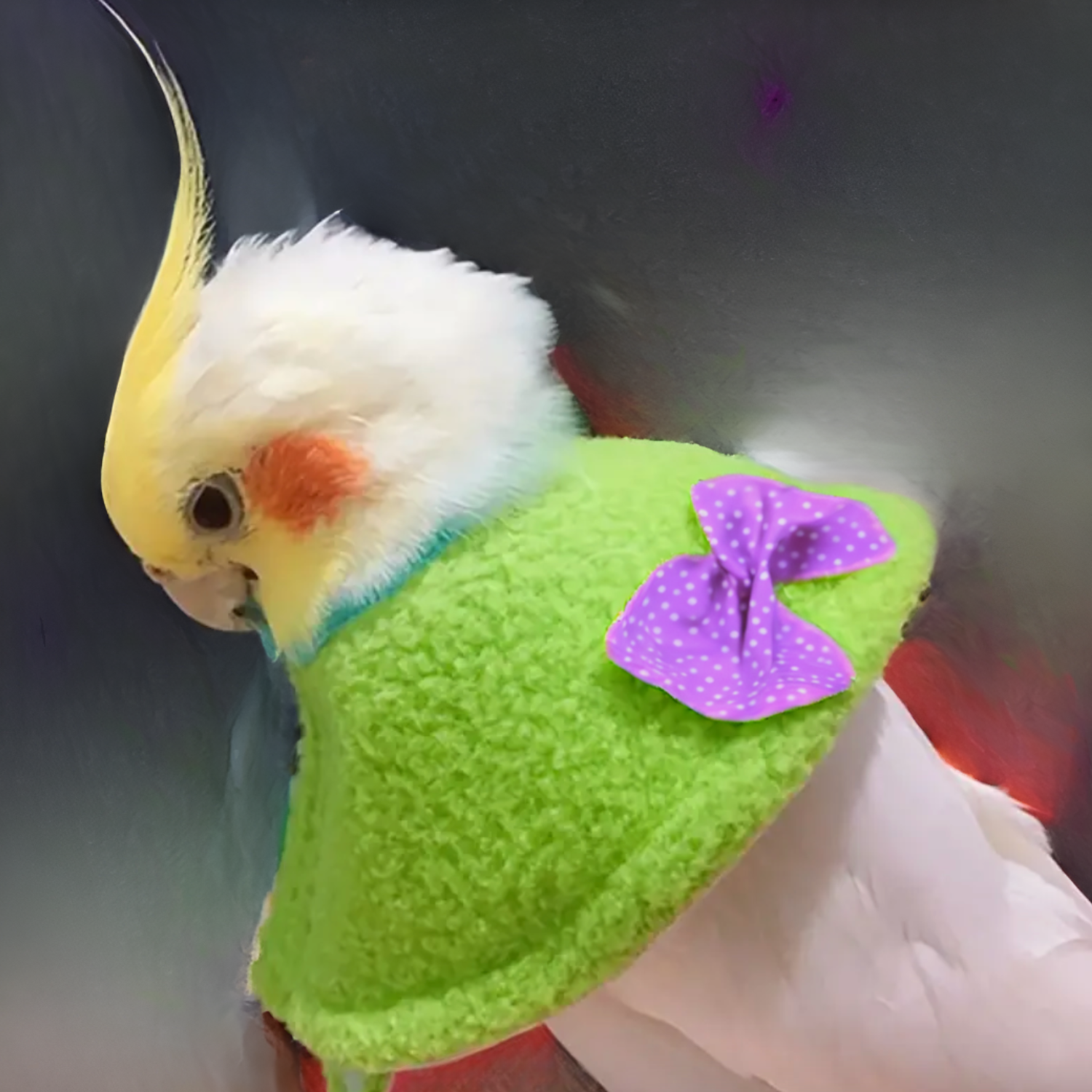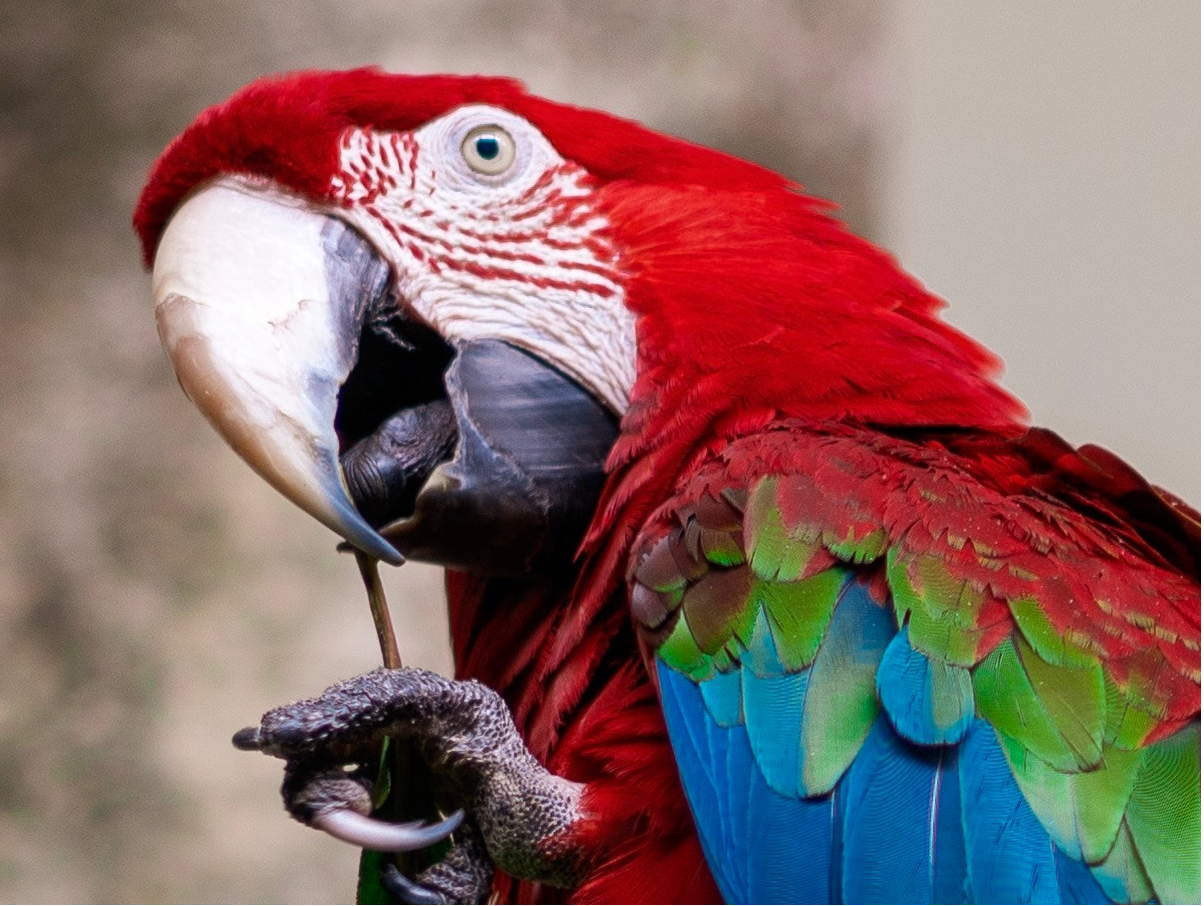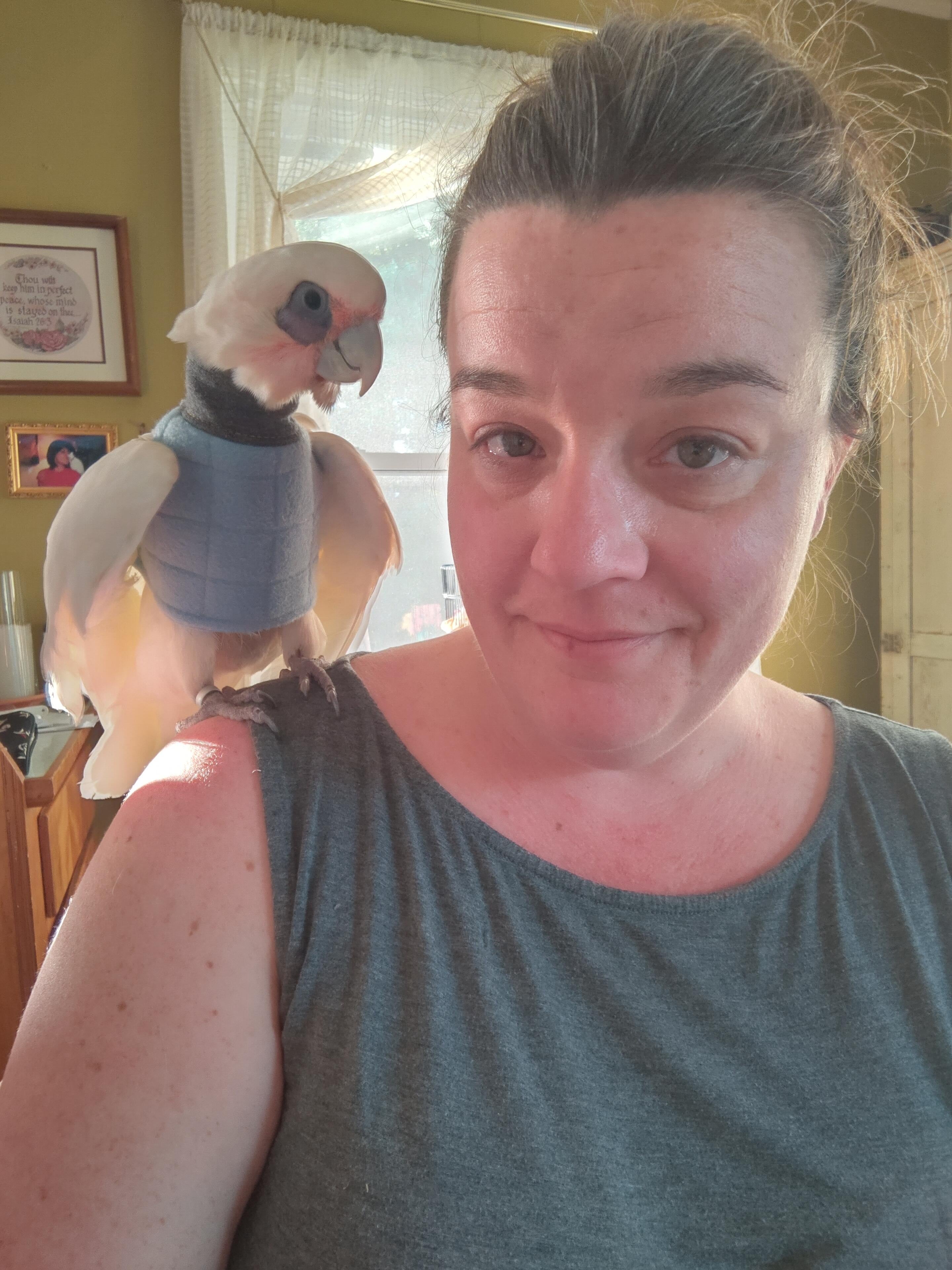Do bird collars work for plucking?
There is a fine line between making a sturdy bird collar that is still light enough for a bird to safely wear – while still allowing it to carry on with its regular daily activities.
Our birds are extremely flexible with a powerful beak, but we know that hard plastic e-collars can have a major impact on their mental health.
We've listed some of the methods we believe are the most humane for helping a bird adjust to wearing a bird collar, so you can finally get a handle on the feather-plucking behavior and get gorgeous feathers back.
This isn't an all-inclusive list, but it definitely follows behavior science. Plus, these methods tend to have long-term results! Isn't that what you really want? To get into an easy to implement routine of excellent bird care to bring out the best in your best friend?
If you're unsure about which collar is best for your bird, check out our guide on how to choose a bird collar.
Are e-collars safe for birds?
Most animals hate e-collars of any kind and birds are no different. Collars can be distressing for some birds and it can take a while until they get used to them.
Sometimes people decide to deal with the plucking after the bird starts showing signs of being sick. Using a bird collar with a sick or weak bird is a decision to make with your avian vet. You'll want to make sure that your bird has the stamina to maneuver around the cage and carry the weight of a bird collar
 |
Whenever there are any signs that your bird is sick or weak, be sure to check with your vet to make sure your bird is a good fit to wear a collar. |
We have found that birds that pluck multiple areas of their body, or who have been plucking for 2 years or more, experience the roughest time getting used to wearing a collar.
Some birds will start to flap around and put themselves in danger of being injured. Others will use their strong beaks to rip the collar to shreds or chew the Velcro open.
To help ensure a secure and comfortable fit for your bird, it's essential to choose the right size collar. Check out our Bird Collar Size Chart to find the perfect fit and minimize discomfort for your feathered friend.
In addition to a bird collar, how do I stop my bird from plucking?
Birds start to feather-pluck for a number of reasons. The fastest path to recovery is determining the root cause of why they feather-pluck in the first place. Plucking usually occurs for a number of reasons that cause the bird stress. But, practicing optimum parrot wellness and positive reinforcement hold the greatest hope.

If your bird is rolling over or flapping around in fear, safely confine it so that it can't hurt itself
If your bird is flapping around the cage and putting itself at risk of an injury, consider making a "rehabilitation enclosure" for it. Phobic fear usually involves behaviors like thrashing about the cage, frantically flapping about, or rolling over as if they are giving up.
Generally, these behaviors are the birds way of telling you to "back-off!"
Why a rehabilitation enclosure?
Rehab enclosures serve to keep your bird safe. When bird thrashes about in a traditional cage it can break wing feathers, bruise its wings, and even experience worse injuries.
These painful injuries can turn into a self-fulfilling prophecy where your bird fears getting injured as much as it is phobic of people. In this situation, a rehabilitation enclosure can be invaluable.
Your bird soon learns that it is safe inside of the enclosure. You can cover as much or as little of the enclosures as needed to help your bird feel safe. A bird that feels safe can stop the panic attacks that constantly dump tons of cortisol and adrenaline into the bloodstream.

How to make a rehabilitation enclosure
1. Get a large clear bin with a lid. Drill some air holes in the lid. Place the bin in a relatively quiet area. We like this large one by Sterilite.
2. Line the bottom of the bin with paper and towels. Add some perches and a food and water bowl. Place your bird inside of the container.
3. If your bird can tolerate it, add some foraging toys, like pellets in a paper bag and other items that your bird can chew or shred. Chewing and and shredding use up excess energy and foraging can calm your bird. The idea is to make sure that your bird is comfortable and that it can engage in natural parrot behaviors.

4. Cover up to half of the rehabilitation enclosure during the day and fully at night (make sure that you've drilled air holes in the lid). Daytime coverage helps provide an additional level of safety while night-time coverage promotes healing sleep.
5. Once your bird starts to settle down you can work on counterconditioning it.

Related Posts:
Basic Neck Collar Size Guide
Huggle Neck Collar Size Guide
Bird Collar Size Chart
References:










